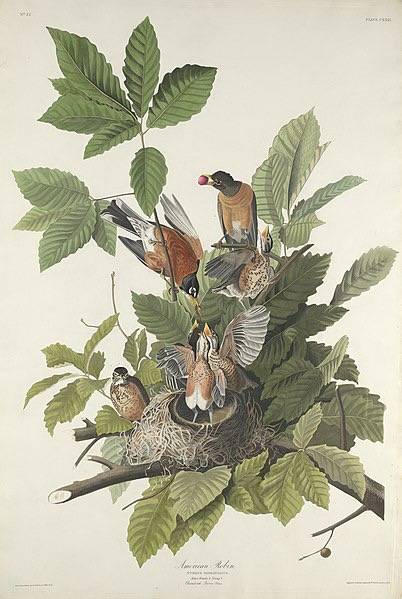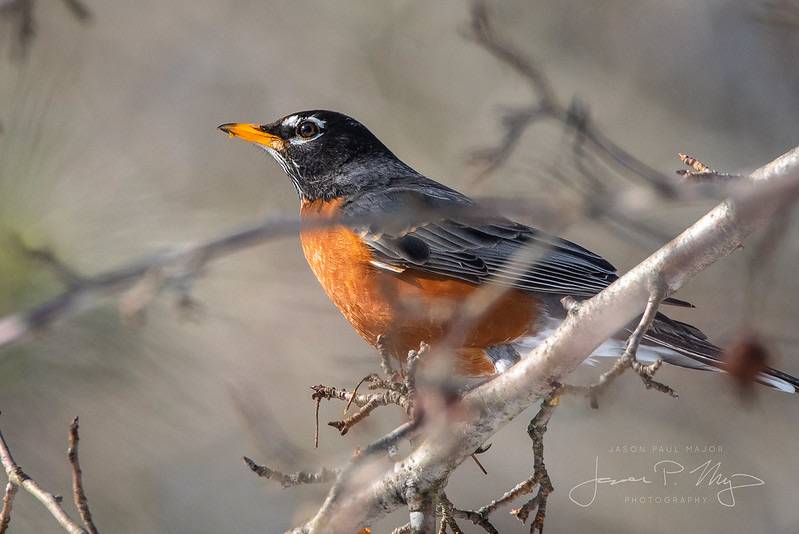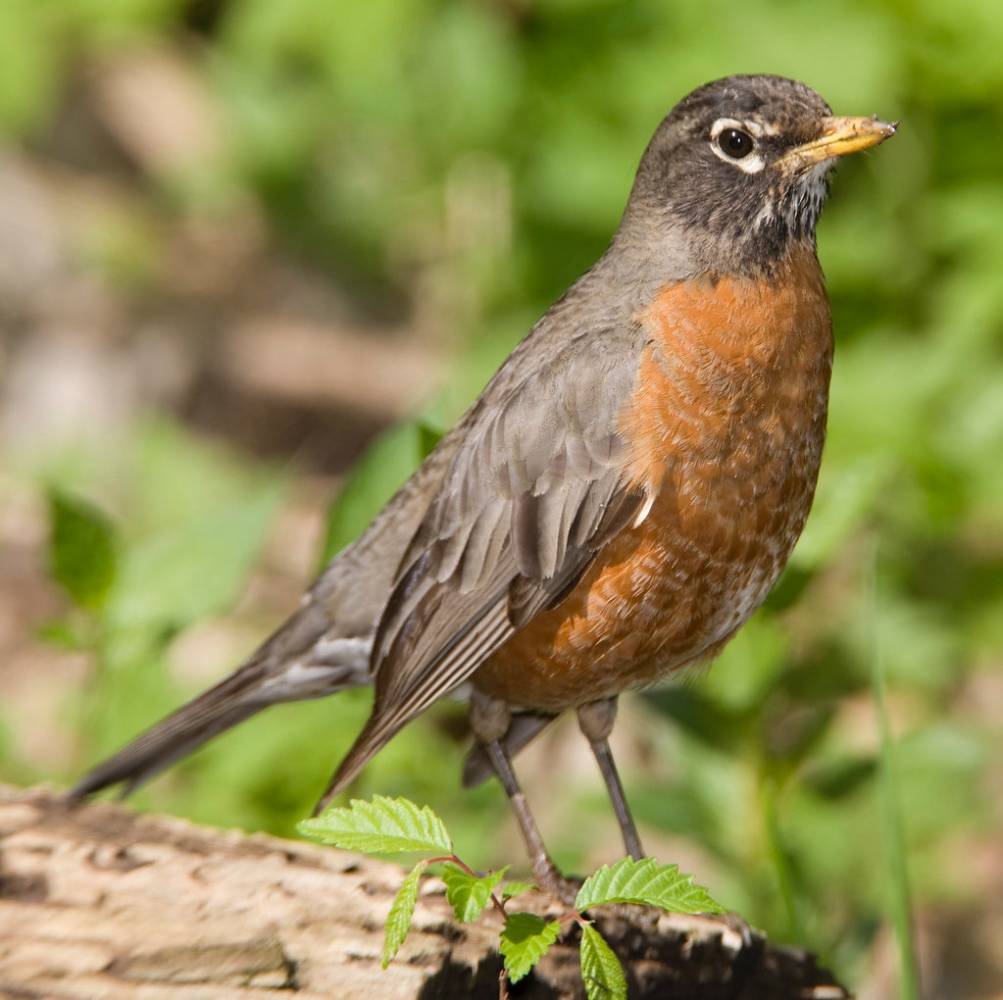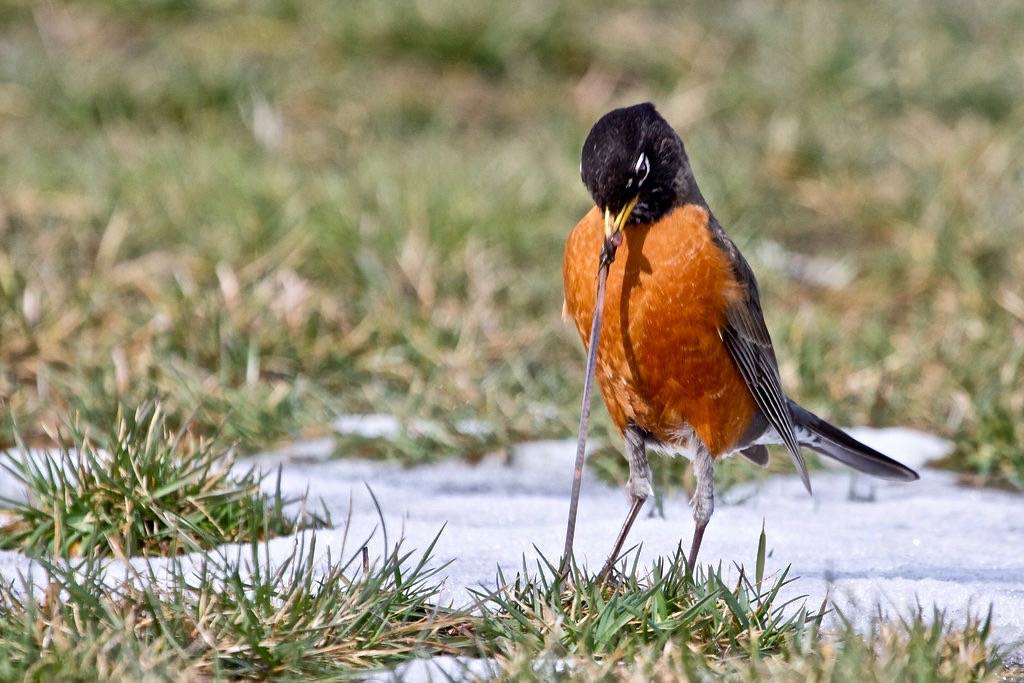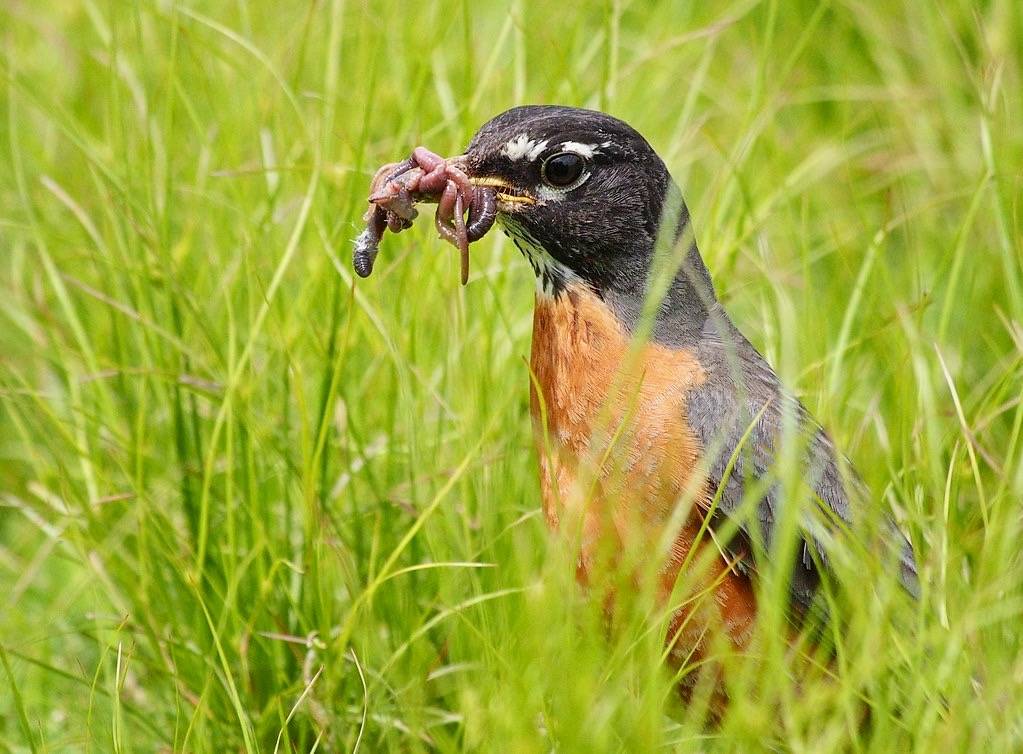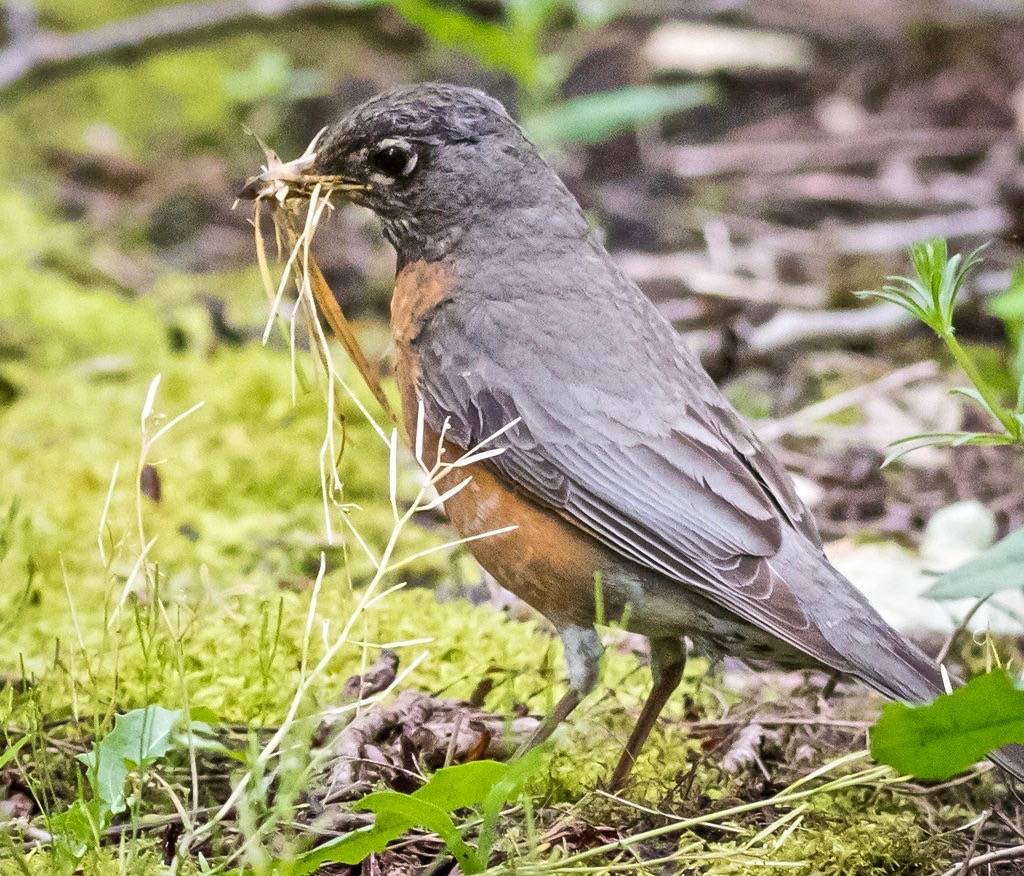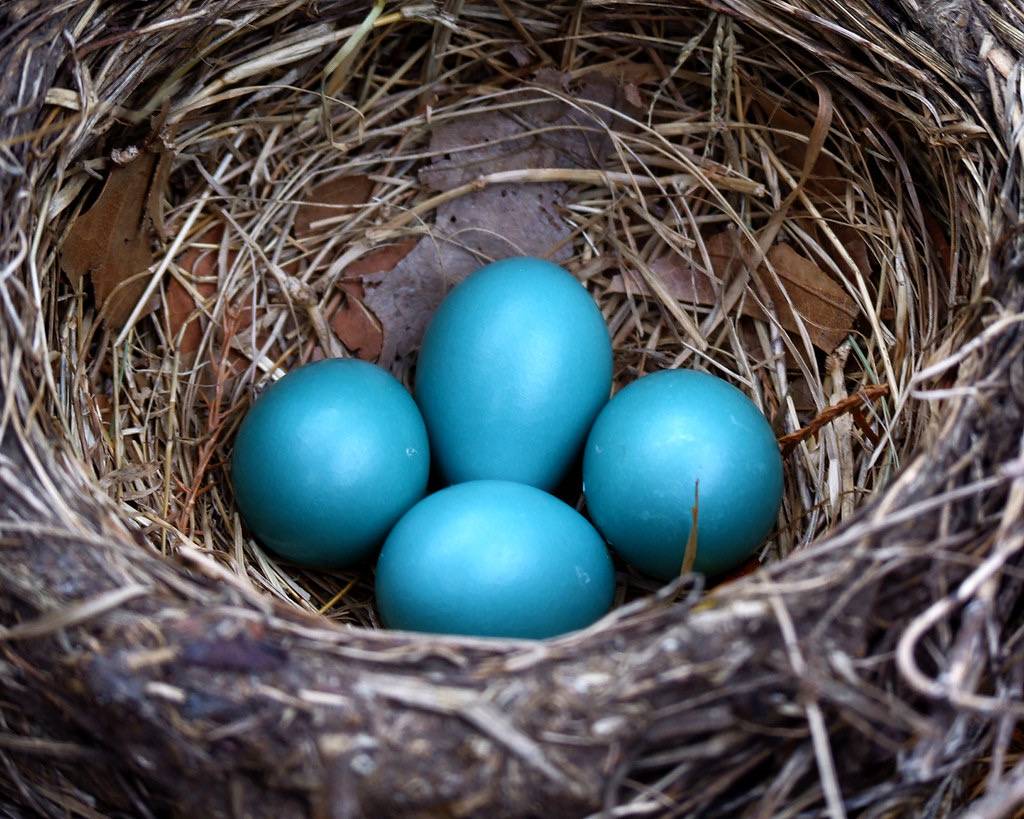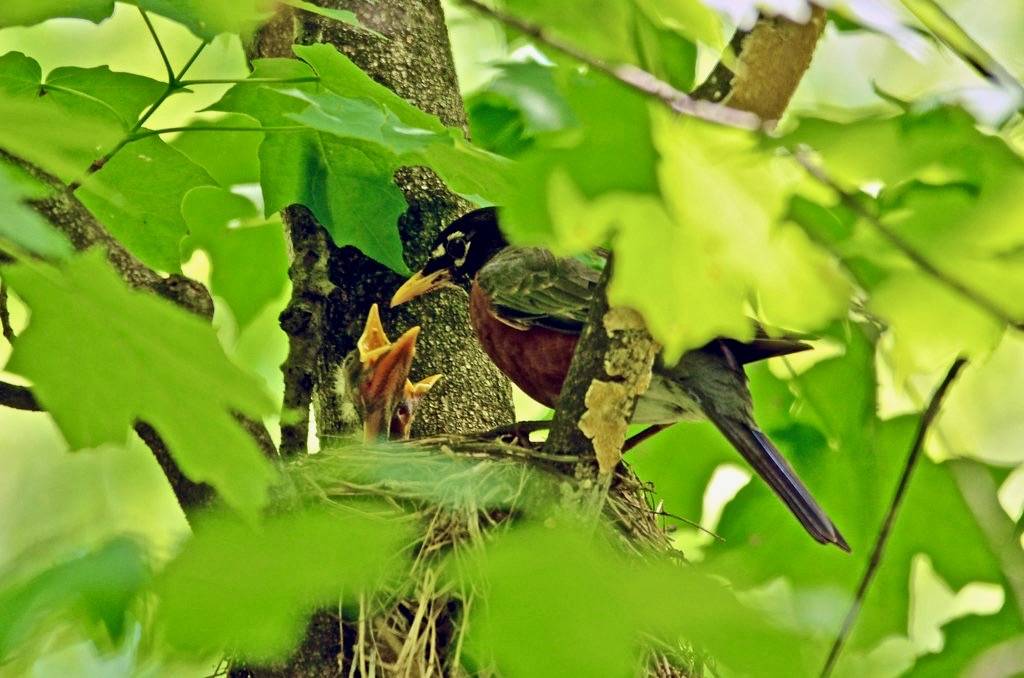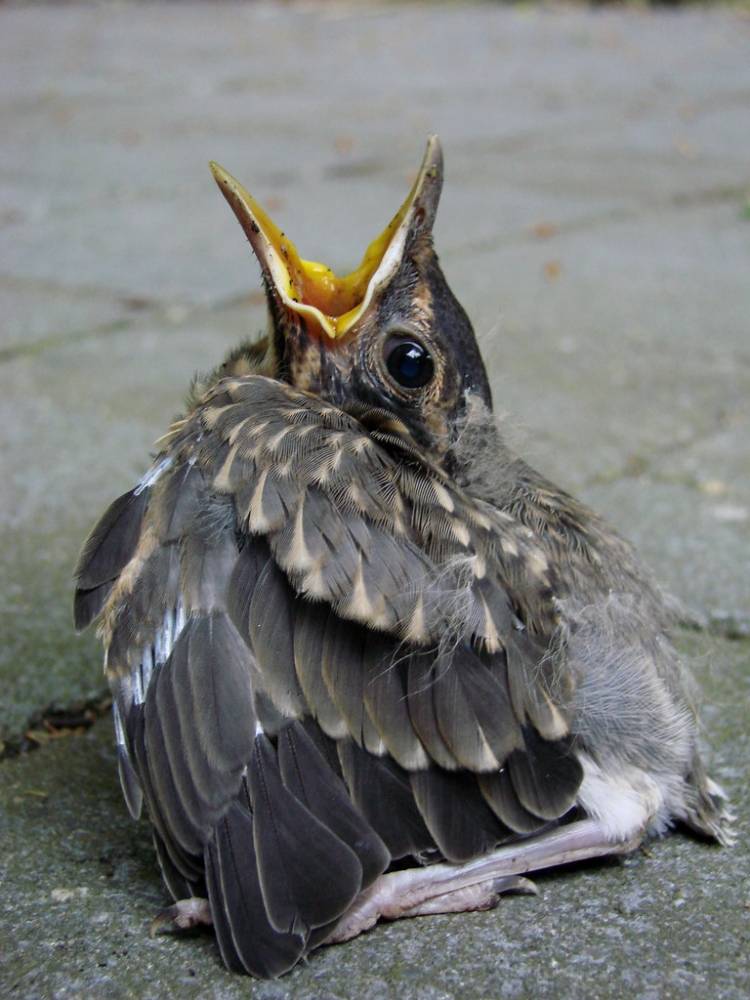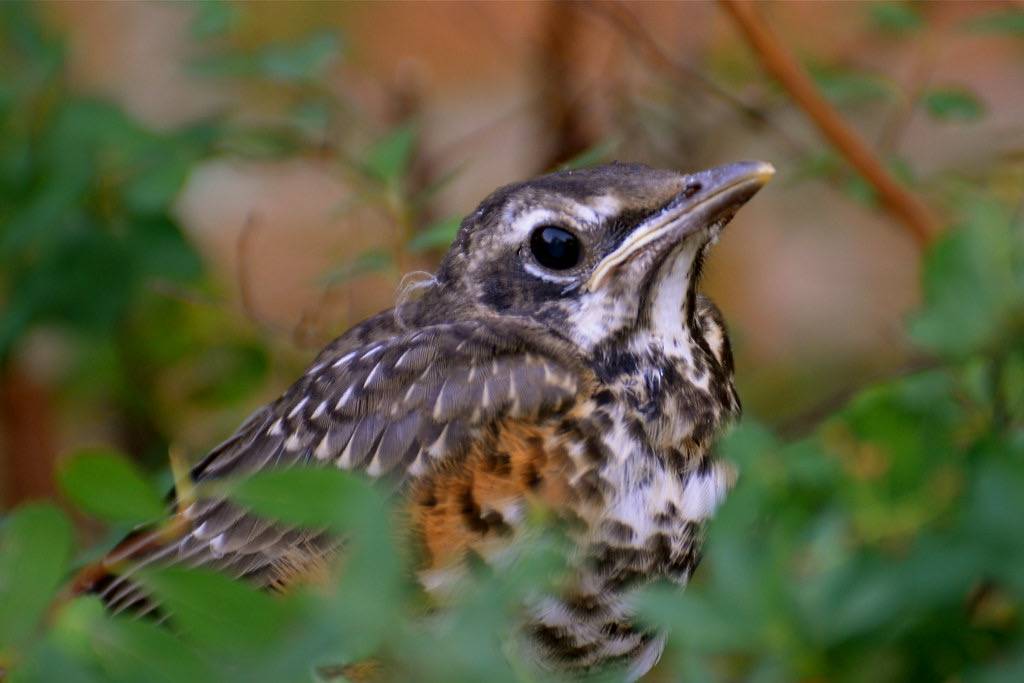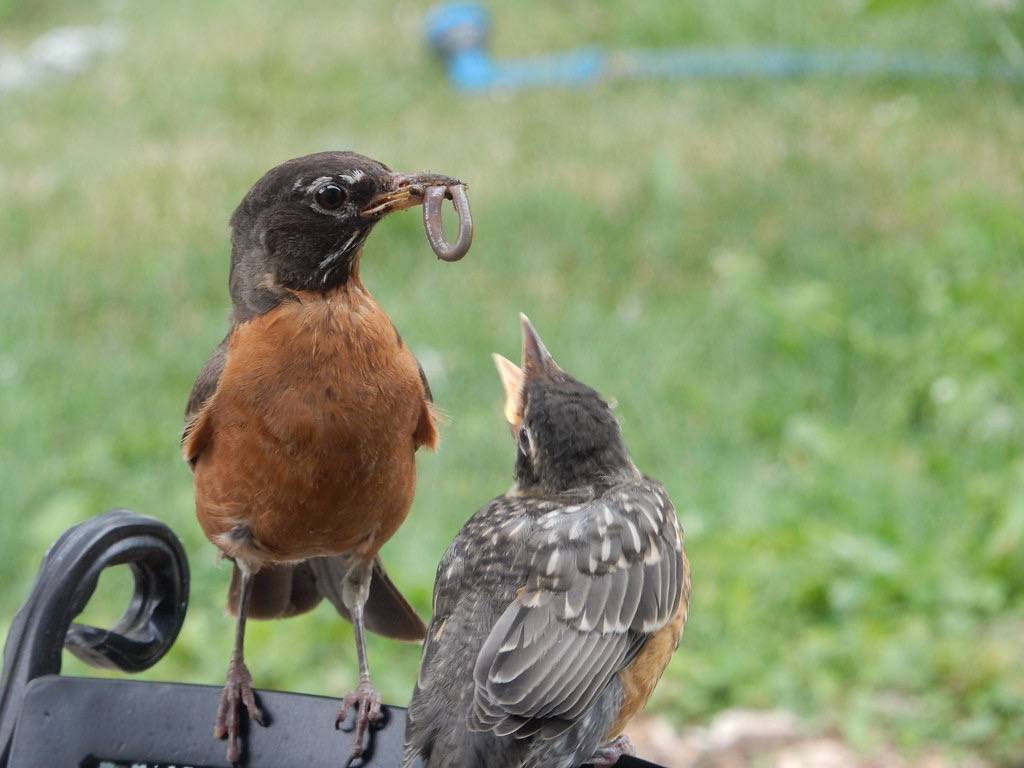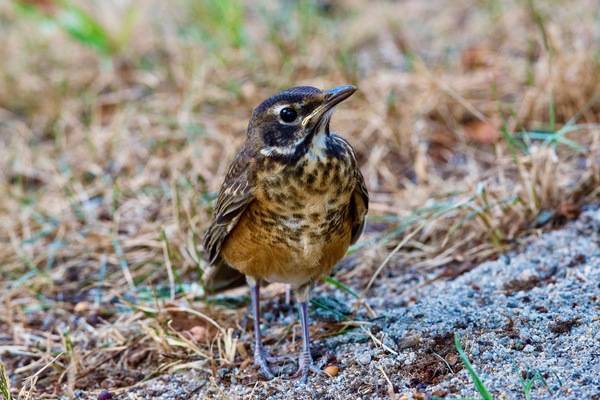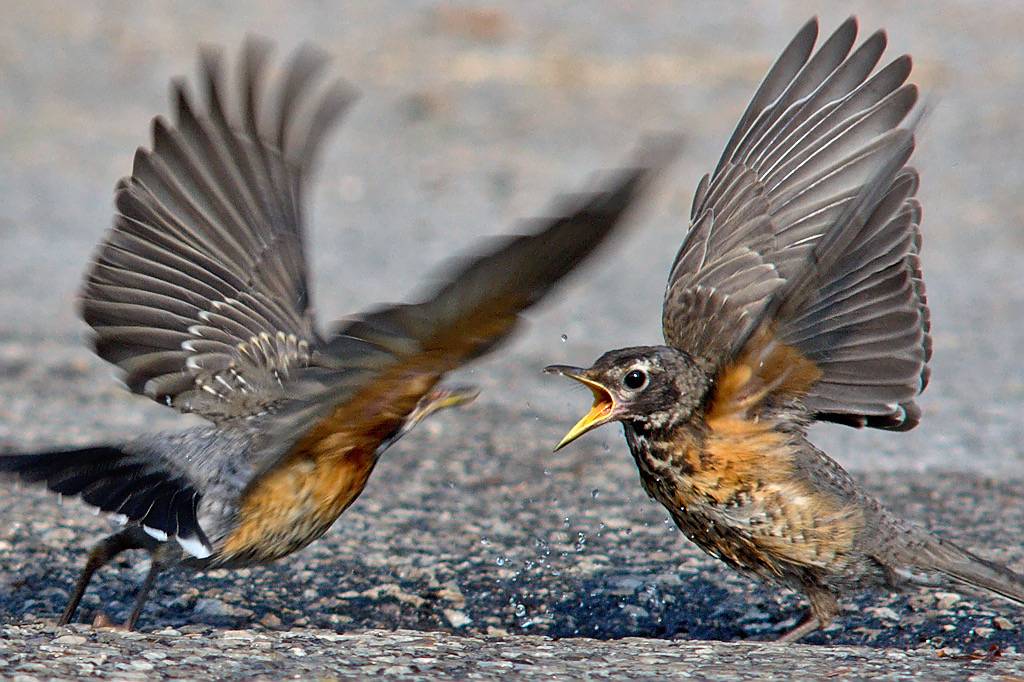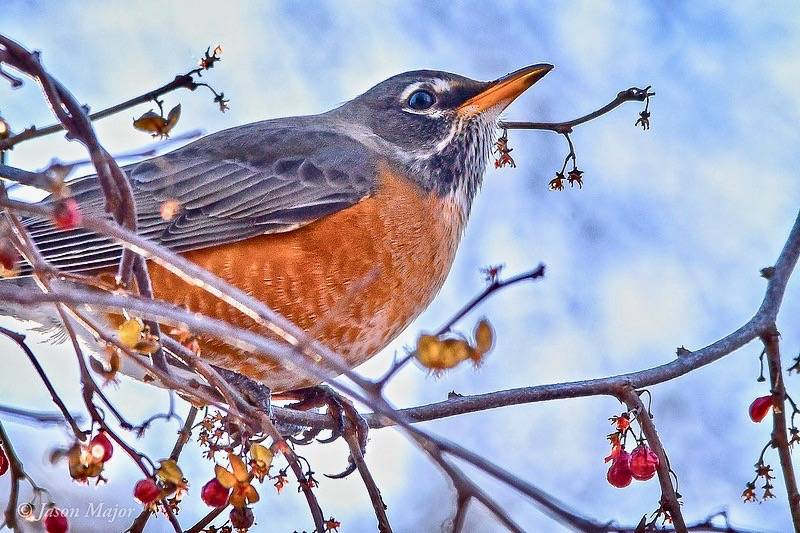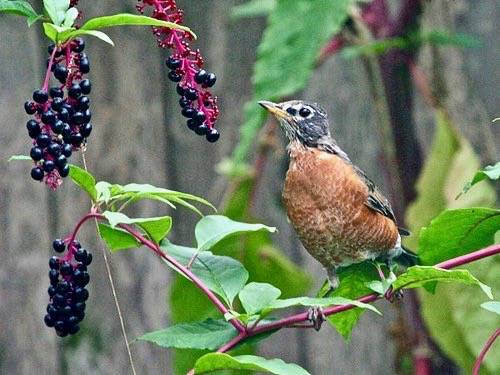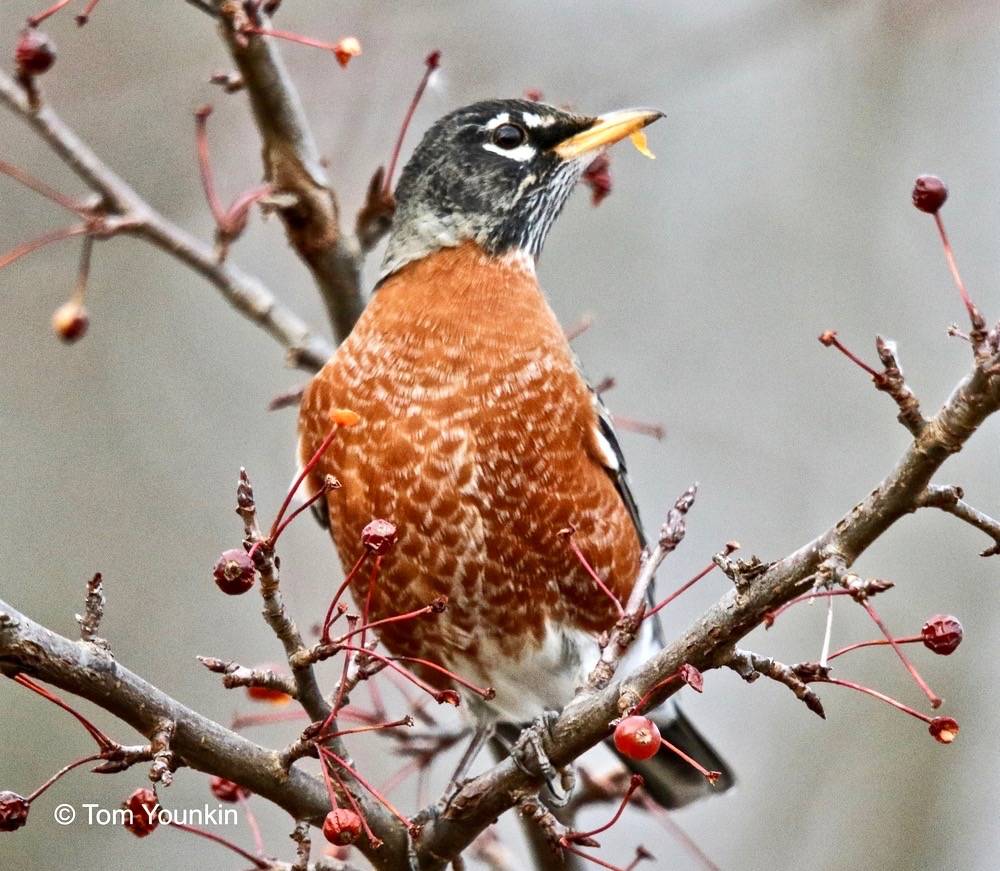American Robin
Data contributed by birdwatchers since 2002 indicate that the American Robin has been observed nearly every week of the year at Salter Grove. It is a familiar sight in early spring as it runs across lawns near the parking lot, only to stop abruptly to pull a worm from the ground. They can be seen foraging for invertebrates on the ground during the breeding season and then switching to small fruits and berries on tree tops after their young are independent.
The American Robin breeds throughout North America, wintering from southern Canada to central Mexico. Human activities have increased its preferred nesting habitats of woodland edges, and scattered shrubs or trees. It has been reported to be the most abundant species in North America.
The brightly plumaged males busily court the duller females through late spring and early summer.
It is one of the earliest bird to lay eggs. Under favorable conditions, up to three broods of young are produced in one breeding season. A new nest is built for each clutch and is placed on the ground or high up in a tree. Rather haggard looking adults can be seen in the park towards the end of July as they are pursued by young birds noisily begging for food.
Outside the breeding season at Salter Grove the number of robins seen fluctuates greatly, ranging from solitary individuals to flocks of dozens of birds. Such a pattern suggests that a succession of robins passes through the park. However, confirmation of this would require long term observations of banded individuals.

